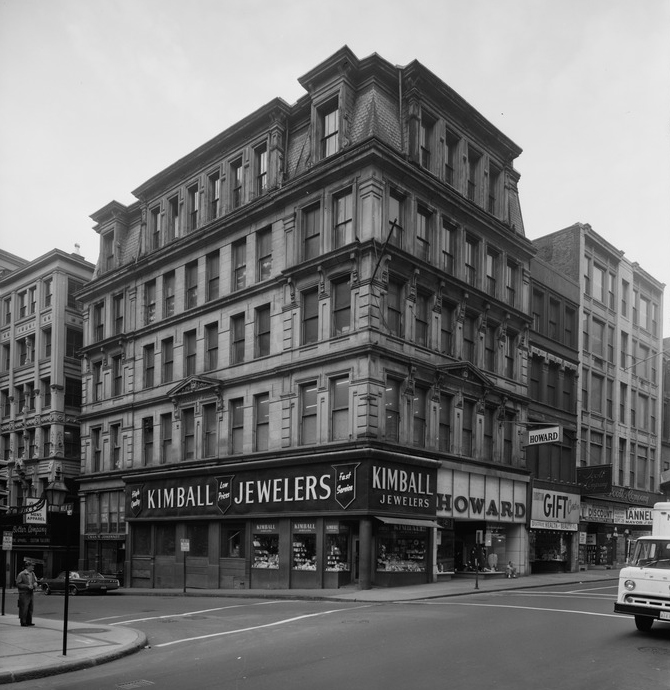Throwback Thursday: When the Boston Evening Transcript Was First Published

Boston Transcript Building photo via Wikimedia Commons
In the early 19th century, newspapers, often openly opinionated and witty, proliferated in Boston. A total of 15 daily papers were published between 1830 and 1840. And on July 24, 1830, the Boston Evening Transcript became one of them.
When the Boston Evening Bulletin ceased publication in 1830, Henry Dutton and James Wentworth, who were the official state printers of Massachusetts, jumped at the opportunity to meet the newfound need for an evening penny paper. With a front page filled with advertisements and shipping schedules, the Transcript published its first issue, charging $4 per year for a subscription.
Its publication was not met with immediate praise from the community—something the paper’s staff addressed with a tone of defiance in its second issue:
“We were early informed that Printers and Publishers had combined to put down this paper, and we are satisfied that they have chosen the most effectual means, by suffering its birth to pass unnoticed. Had we not been used to the cold bath from our infancy, this dash of water would have chilled us to the bone. As it is, it has served only to invigorate.”
Welcome or not, the Transcript persisted for 111 years. It went on to publish a regular genealogy column, the lengthy speech Daniel Webster gave as principal counsel in an infamously divisive murder trial, a detailed account of the funeral of King George IV, and local crime reports. Eventually, the paper also became known for catering to Boston’s elite.
“There is also the classic story of a Back Bay gentleman being told by his butler, ‘Sir, there are three reporters here to see you, as well as a gentleman from the Transcript,’” said Robert Allison, chair of the Suffolk University history department.
Fatefully, Lynde M. Walter, the paper’s first editor, died on July 24, 1842—exactly 12 years after the first issue of the Transcript. Cornelia Wells Walter, who had been the paper’s theater critic, took over her brother’s vacant post and, at age 27, became the country’s first female editor of a daily newspaper.
As print revenues fall in today’s journalism market, the Boston Evening Transcript exemplifies a distant time when numerous daily print editions were not only common but comparatively successful. But, of course, as evidenced by a commentary published on Aug. 30, 1830, some things never do change:
“There is nothing which so perplexes the stranger who has for the first time come upon a visit to our City, as its labyrinthian streets. The Map is a perfect chaos, and all directions are set at defiance by the abrupt terminations of our high-ways, and their sinuous and uncertain windings.”
Boston’s streets and the confusion—and traffic—they induce have, apparently, always been news.


